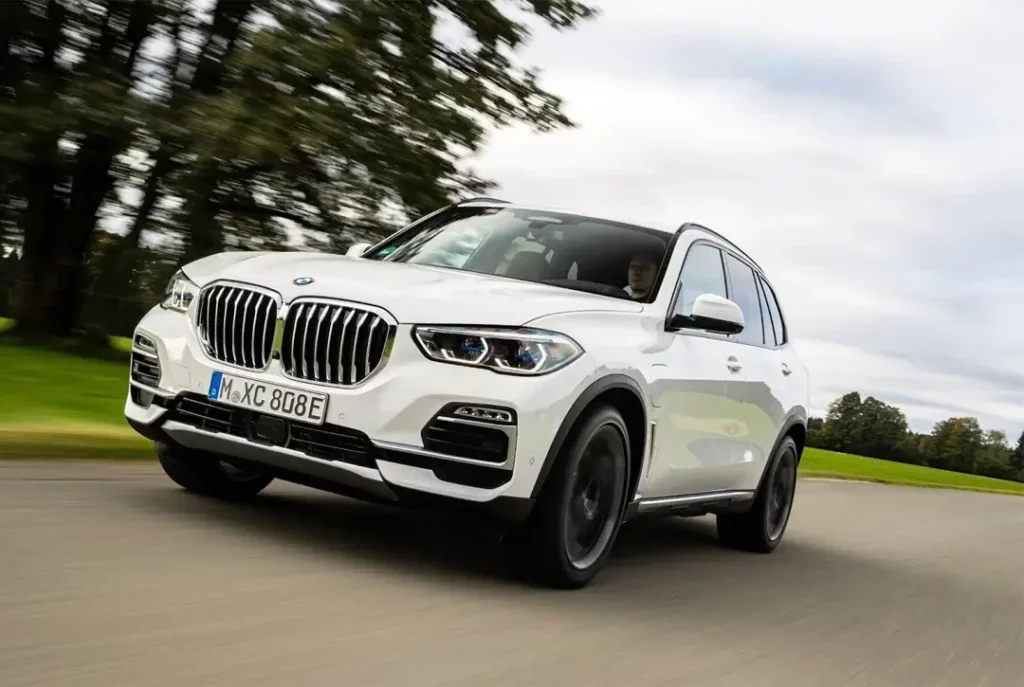Buying a new car is an expensive endeavor, even when you’re looking at some of the mainstream economic models. Luxury models, meanwhile, are often dismissed as an option outright by the majority of shoppers as they simply cost far too much to buy firsthand.
Now, this isn’t a problem for people who make a habit of buying premium vehicles, as they’re happy to pay for the best. Still, average consumers who might want a taste of the good life are better off looking at the secondhand market.
In fact, they can find a really good deal by looking at used luxury cars because of one of the classification’s intrinsic failings—they depreciate in value at an alarming rate. This means that a top luxury hybrid SUV, like a BMW X5, that costs $65,000 brand-new may be as cheap as $25k after five years.
The sticker price can drop by half in as little as three years. But why is this the case when a typical Honda or Toyota only loses 20-30% of its value in the same timeframe?

The Price of Prestige
As silly as it may sound, a large portion of the asking price of a BMW, Mercedes-Benz, or Ferrari is actually the brand name. This has absolutely no bearing on the performance or practicality of the car, yet people are willing to pay extra for it.
All of this is not to say that these cars are not exceptional, usually with the most advanced technology available, but you can get the same in another vehicle like a Hyundai at a fraction of the cost.
Suggestion: 9 Best Hybrid Cars 2022 Review That Gives Full Value To Money
These intangible qualities may be what inflate the initial asking price of a luxury, but they have no value to shoppers in the secondhand market. After all, there isn’t nearly as much status to be gained from owning a three- or five-year-old Mercedes as there is in owning a spanking-new model. Since used car dealers can’t reasonably expect consumers to pay for this, they don’t. This is one of the reasons that premium vehicles lose so much of their value so quickly.
An Excess of Excess
As stated, many shoppers desire luxury cars for their status, and since they lose their luster after a few years, at least in the eyes of discerning motorists, it makes sense to trade them in for a newer model. Whereas owners of economy vehicles like a Toyota Camry or Honda HR-V will hold onto their cars for as long as ten years, BMW and Audi drivers feel the need to trade in for a newer model in as little as three years. This is especially common among consumers who lease their vehicles.
Naturally, this tendency to sell so soon after purchase means that there is often a surplus of relatively new models in the secondhand model. And as most of us know, when there is no lack of supply and demand is not particularly high, the average price drops noticeably.
Have You Read This? 9 Best Electric Paint Sprayer For Cars – Buyer’s Guide
One of the leading reasons that demand is low is that people who typically want to own a luxury car wouldn’t dream of buying a used model. This leaves the usual shoppers in the segment, which are people looking for a good deal. As such, dealers or secondhand sellers have to price their offerings accordingly.

Risk and Reward
Another concern many buyers of luxury vehicles have, especially those looking at pre-owned models, is the poor reputation that most premium automakers have for reliability. These cars work well when new, so firsthand owners seldom have to worry much about maintenance and repairs unless something truly unexpected happens. However, problems do crop up after a few years, usually, after the complimentary maintenance schedule has lapsed.
This means that the onus of paying for repairs and maintenance will be solely upon the secondhand consumer, and considering how advanced these vehicles are, the costs are worryingly high. This is especially true of advanced EVs, such as the BMW iX, which is one of the best luxury electric SUVs currently available. Since it is so new, it will still be a few years before the used market sees an influx of this model.
With these extra costs in mind, consumers expect second-hand sellers to lower the asking price by a commensurate amount. The cost of necessary repairs and maintenance can amount to as much as 50% of the initial price of the vehicle, so while depreciation may see you spending up to 70% less to get behind the wheel, you may only end up saving 20% of your money. This is a risk you always run when buying a used vehicle, though.
In Summation
There are plenty of reasons why luxury vehicles lose so much of their value so quickly. Luckily, people who buy these cars firsthand typically don’t care how much they cost nor how much they get back when it comes time to trade in for a newer model.
This means that it is the bargain hunters buying secondhand that get all the benefits. Nevertheless, some savvy shopping strategies can save you even more, and knowing the reasons why premium cars lose their value can help you cherry-pick the best options on the market.
Discover more from Locar Deals
Subscribe to get the latest posts to your email.





